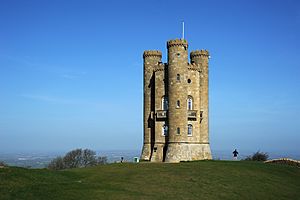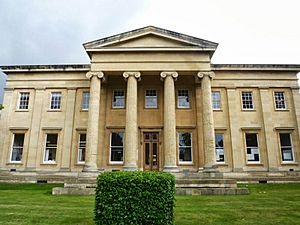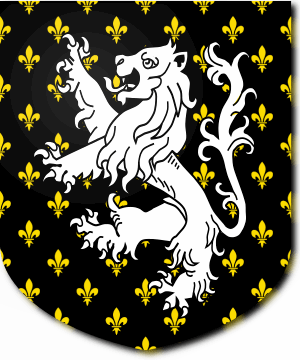Thomas Phillipps facts for kids
Quick facts for kids
Sir Thomas Phillipps, Bt
|
|
|---|---|

Sir Thomas Phillipps, ca. 1860
|
|
| Born | 2 July 1792 Manchester
|
| Died | 6 February 1872 (aged 79) Thirlestaine House, Cheltenham
|
| Resting place | Church of St Eadburgha, Broadway, Worcestershire |
| Alma mater | University College, Oxford |
| Occupation | antiquarian, book collector |
| Spouse(s) | Henrietta Elizabeth Molyneux (1819–1832); Elizabeth Harriet Anne Mansel (1848–1872) |
| Children | Henrietta (born 1819), Sophia (born 1821), and Katharine (born 1829) |
| Parent(s) | Thomas Phillipps and Hannah Walton (illegitimate) |
Sir Thomas Phillipps (born July 2, 1792 – died February 6, 1872) was an English antiquary and book collector. An antiquary is someone who studies old things. He gathered the largest collection of old handwritten papers, called manuscripts, in the 1800s.
Thomas Phillipps was the son of a textile maker. He inherited a lot of money. He spent almost all of it on old manuscripts made of vellum (animal skin). When he ran out of money, he borrowed a lot to buy more. This put his family deep into debt. He once wrote that he started collecting because he read about valuable manuscripts being destroyed. He loved collecting so much that he bought about 40,000 printed books and 60,000 manuscripts. This might be the biggest collection ever made by one person. He even made up the word "vello-maniac" to describe his strong desire to collect vellum manuscripts. This obsession is also called bibliomania.
Contents
Sir Thomas Phillipps' Amazing Collection
When Thomas Phillipps was 16 years old in 1808, he already owned 112 books. Many of these were small, cheap storybooks called chapbooks. Later in life, he said he wanted to own one of every book in the world. He started collecting seriously while he was still at Rugby. A list of his manuscripts from 1811 shows he was collecting a lot by then. He kept buying books when he went to University College, Oxford. He finished his studies in 1815. In 1820, he became a Fellow of the Royal Society. This is a group for important scientists.
How He Collected Books
A historian named A. N. L. Munby said that Phillipps spent a huge amount of money on his collection. He spent thousands of pounds each year. He bought about 40 to 50 new items every week. Phillipps would go into bookshops and buy everything they had. He would get catalogs from book dealers and buy every item listed. His helpers would buy whole groups of books at auctions. He often outbid the British Museum, which was a major rival.
A House Full of Books
His country home, Middle Hill, near Broadway, Worcestershire, was filled with books. Sixteen out of twenty rooms were used for his collection. Sir Frederic Madden, who was in charge of manuscripts at the British Museum, visited the house. He wrote in his diary that the house looked very messy. He said every room was full of papers, manuscripts, and books. They were piled on tables, beds, chairs, and even ladders. There were also huge boxes of valuable books stacked up to the ceiling. Madden found the air in the house stuffy because the windows were never opened.
In 1850, Phillipps said he wanted to move his large collection to Wales. In 1853, he hired a distant relative, Amelia Elizabeth Guppy, to take photos of some of his collection. These photos included old items from Babylon and Utrecht.
Moving the Collection
In 1863, Phillipps started moving his collection. He was worried that his son-in-law, James Orchard Halliwell, would get the books. This was because Phillipps' daughter, who was not getting along with her father, would inherit Middle Hill. Phillipps believed Halliwell had taken his 1603 copy of Hamlet. He also thought Halliwell damaged other old books by cutting out pages.
It took eight months to move the collection. Over 105 wagon-loads of books were moved. Each wagon was pulled by two horses and had one or two men with it. The collection was moved to Thirlestaine House in Cheltenham. Middle Hill was left to fall apart. Many manuscripts in the collection are now known by names like "Codex Middlehillianus" or "Cheltenham Codex."
What Happened to His Collection?
Sir Thomas Phillipps died in 1872. Experts valued his manuscripts at a very high price. He was successful as a collector partly because many old library books became available after the French Revolution. Also, many old English legal papers were cheap to buy. Phillipps was very good at making lists of his books. He even started his own printing press in 1822, called the Middle Hill Press. He used it to record his books and to publish his studies on English history and family trees. The press was located in Broadway Tower. This tower was built in 1798.
During his life, Phillipps tried to give his collection to the British nation. He wrote to Benjamin Disraeli, who was in charge of the country's money. Phillipps wanted the British Museum to buy his collection. But they could not agree on a deal. In the end, it took over 100 years to sell off his collection.
Phillipps' will said that his books should stay together at Thirlestaine House. He did not want booksellers or strangers to rearrange them. He also said that no Roman Catholic should be allowed to see them, especially his son-in-law, James Halliwell.
In 1885, a court said that these rules were too strict. This allowed the library to be sold. Phillipps' grandson, Thomas FitzRoy Fenwick, managed the sales for the next fifty years. Many European books were sold to national libraries in other countries. These included the Royal Library in Berlin and the Royal Library of Belgium. Important individual items were sold to famous libraries like the J. Pierpont Morgan and Henry E. Huntington libraries.
By 1946, the remaining part of the collection was sold to London booksellers Phillip and Lionel Robinson. This part of the collection was not fully listed. The Robinsons sold these books through their own catalogs and at auctions. The very last part of the collection was sold in 2006. A five-book history about the collection and its sale, called Phillipps Studies, was written between 1951 and 1960.
His Family Life
Phillipps married Henrietta Elizabeth Molyneux in 1819. This happened after his father died. His father had not wanted him to marry her because she did not have a dowry (money or property given by the bride's family).
In 1821, when he was 29, he was given the title of baronet of Middle Hill. This honor came because his father-in-law had connections with the Duke of Beaufort. In 1825, he was made High Sheriff of Worcestershire. This was an important local position.
Phillipps' oldest daughter, Harriett, married James Orchard Halliwell. Halliwell was a scholar who studied Shakespeare. He had worked with Phillipps when he was a student. In 1842, Halliwell visited Thomas Phillipps and fell in love with Harriett. Phillipps did not want his daughter to marry Halliwell. But the couple married without his permission. Phillipps was very angry about this. He held a grudge against them for the rest of his life.
Sir Thomas Phillipps had only daughters. So, when he died in February 1872 at age 79, his baronet title ended. He was buried at the Church of St Eadburgha in Broadway.
Items from the Phillipps Collection
- Rochefoucauld Grail





